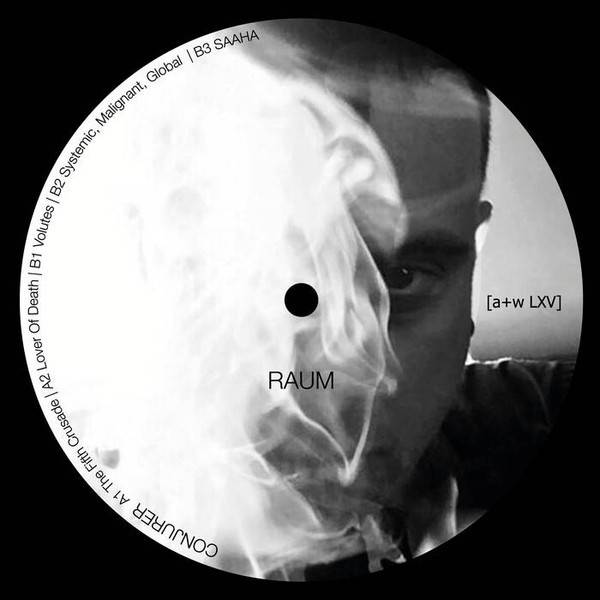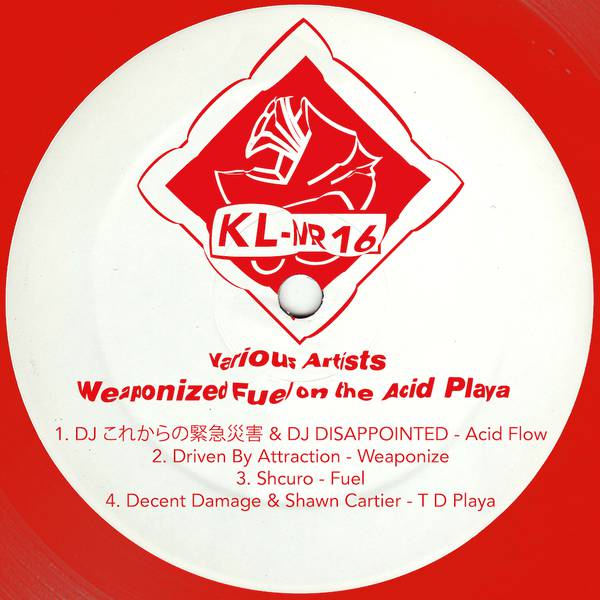
Tax included, Shipping not included
The Local Moon (East Berlin 1987/88)
The name The Local Moon originated from an intimation by the oriental jester Nasreddin that every city had its own moon. This idea did not go without a certain local colour in the bipolar frontline city of Berlin; from an astropolitical view, its divided sky never saw a full moon, the light conditions were ideologically broken.
From the black light of those years emerged The Local Moon. René Le Doil and Ronald Lippok took wings like two crows from a pigeon’s nest when quite suddenly in 1987 light entertainment permeated East Berlin’s Offground and the two musicians were hired for the New Romantic revue New Affair. Before that, Le Doil had been involved in the Stattgespräch fashion spectacle and in Allerleirauh, the “thing of light, space, sound and leather”. Lippok had been the drummer for Rosa Extra, one of the earliest punk rock bands in East Berlin. Together with his brother Robert, who had already come into the picture with an avant-punk project named after the Jules Verne novel Fünf Wochen im Ballon (Five Weeks in a Balloon), Ronald Lippok then founded the post-punk commune Ornament & Verbre- chen, for whom Le Doil would occasionally guest as an organist.
The first night songs by The Local Moon were created in the shadows of a bright enthusiasm around New Affair. They were eventually recorded in Le Doil’s flat. Avoiding a fixed approach, Lippok and Le Doil would move the equipment around all the rooms of the flat to create different moods at various latitudes and longitudes of their miniverse, thus spiritually and experimentally charging the songs. Two large black cats observed the two Moonies’ dedicated activity with restrained interest, or impassively, and presumably did much to lift the mood.
The atmosphere created by The Local Moon evoked something like the purely visual acoustics of snow fall- ing silently into a deep utility shaft. From it, Ronald Lippok’s voice would prompt lyrics by witnesses to eternity including William Blake and John Donne. The songs, as well as the aestheticism of the artwork, rep- resent a rare example of black romanticism in the GDR underground. The sequence of songs on the tape is set in figurative brackets; on side A in the form of the lunar phase going from half-moon to full moon, on side B from full moon to new moon. Side A thus represents hope and a new beginning, side B despair and suicide. The tape peters out in a continuous loop – a conclusion entirely in the spirit of a preliminary doomsday.
The Local Moon undoubtedly was among the blackest darkwave in the East, which had spawned bands like Ornament & Verbrechen, Aufruhr zur Liebe, Cadavre Exquis, Komakino, Neun Tage Alt, Fellini Prostitutes, L’ambassadeur des Ombres, Rosengarten, Grabnoct, Nontoxic, KG Rest or Die Zucht. This limited cluster, sans inner circle, did not find its true representation on the map of an alternative soundscape. The rather modest edition of a Local Moon tape, of which a whop- ping 50 copies were put out on a non-existent market, was not due to their marginalisation within a counter-cultural scene that knew its own debates on formalism, but to DIY conditions specific to the East.
The literature samizdat Verwendung, in an edition of 100, was also circulated in this cultural shadow economy. Its fourth issue contained texts by the US beatnik bard Bob Kaufmann. The setting of his poem “A Buddhist Experience” by The Local Moon triggered a plan in 1988 to include a single with further Kaufmann adaptations by the band in a future issue. Recording now took place in an East Berlin backyard studio, and the technological system break from tape to single was followed by a musical change in style from rapturous sounds to more expressive echoes. The single was a coup: mastered and pressed in Hamburg, West Germany, a total of 400 copies were released in East Berlin. The Local Moon’s 7’’ EP was not the first illegal vinyl record by a GDR underground band, but it was the only one actually released and distributed within the great socialist cultural nation and below its censorship radar.
The Local Moon (Ostberlin 1987/88)
Der Name The Local Moon ging auf eine Einflüsterung des orientalischen Ulenspiegels Nasreddin Hodscha zurück, jede Stadt hätte ihren eigenen Mond. Diese Vorstellung entbehrte in einer bipolaren Frontstadt nicht eines gewissen Lokalkolorits; im geteilten Himmel über Berlin herrschte aus astropolitischer Perspektive nie Vollmond, die Lichtverhältnisse waren weltanschaulich gebrochen.
Dem Schwarzlicht jener Jahre entstieg The Local Moon. Allerdings flogen René Le Doil und Ronald Lippok wie zwei Krähen aus einem Taubennest auf, denn 1987 wehte plötzlich die leichte Muse durch den Ostberliner Offground und die beiden Musiker wurden für die New- Romantic-Revue New Affair angeheuert. Zuvor mischte Le Doil bei dem Modespektakel Stattgespräch und bei Allerleirauh, dem „Ding aus Licht, Raum, Klang und Leder“, mit. Lippok spielte Schlagzeug bei Rosa Extra, einer der ersten Punkrockbands Ostberlins. Gemein- sam mit seinem Bruder Robert, der bereits mit einem nach dem Jules-Verne-Roman Fünf Wochen Im Ballon benannten Avantpunk-Projekt in Erscheinung getreten war, gründete Ronald Lippok anschließend die Post-punk-Kommune Ornament & Verbrechen. Gelegentlicher Gastorganist von O&V war dann wiederum Le Doil.
Die ersten Nachtgesänge von The Local Moon entstanden im Schatten einer hellen Begeisterung um New Affair. Aufgenommen wurde schließlich in der Wohnung Le Doils. Starre Spieleröffnungen meidend, zogen Lippok und Le Doil mit dem Equipment durch sämtliche Räume der Wohnung, um Stimmungen auf verschiedenen Breiten- und Längengraden ihres Miniversums zu erzeugen und so die Songs spirituell und experimentell aufzuladen. Zwei große, schwarze Katzen beobachteten das engagierte Treiben der beiden Moonies verhalten interessiert bis ungerührt und fungierten vermutlich als Stimmungskanonen.
Die Atmosphäre, welche The Local Moon kreierte, beschwor soetwas wie die rein visuelle Akustik von Schnee herauf, der lautlos in einen tiefen Versorgungsschacht fällt. Aus ihm souffllierte die Stimme Ronald Lippoks vorzugsweise Texte von Zeitzeugen der Ewigkeit wie William Blake und John Donne. Die Songs, wie auch er Ästhetizismus des Artworks, stehen für ein seltenes Beispiel schwarzer Romantik im DDR-Underground. Die Songfolge des Tapes ist jeweils in bildliche Klammern gesetzt; auf Seite A durch die Mondphase von Mond zu Vollmond, auf Seite B von Mond zu Neumond. Seite A steht somit für Hoffnung und Neubeginn, Seite B ent- sprechend für Verzweiflung und Suizid. Das Tape läuft in Dauerschleife aus – ein Fazit, ganz im Geiste einer vor- läufigen Endzeit.
The Local Moon zählte zweifellos zum schwarzgrundiertesten, was Darkwave im Osten um Bands wie Ornament & Verbrechen, Aufruhr zur Liebe, Cadavre Exquis, Koma- kino, Neun Tage Alt, Fellini Prostitutes, L’ambassadeur des Ombres, Rosengarten, Grabnoct, Nontoxic, KG Rest oder Die Zucht hervorbrachte. Dieser überschaubare Kreis ohne Inner Circle spielte auf der Karte einer alternativen Soundlandschaft keine maßstabsgerechte Rolle. Doch nicht ihrer Randständigkeit innerhalb einer gegenkulturellen Szene, die nicht frei von Formalismusdebatten war, sondern den ostspezifischen DIY-Bedingungen war die bescheidene Auflage eines Local-Moon-Tapes geschuldet; es erschien in satten 50 Exemplaren auf einem nicht vorhandenen Markt.
In dieser kulturellen Schattenwirtschaft zirkulierte, in 100 Exemplaren pro Nummer, auch das Literatur-Samisdat Verwendung. Dessen vierte Ausgabe veröffentlichte Texte des US-amerikanischen Beatnik-Barden Bob Kaufmann. Die Vertonung seines Poems „A Buddhist Experience“ durch The Local Moon war 1988 Auslöser eines Plans, der Verwendung eine Single mit weiteren Kaufmann-Adaptionen der Band beizulegen. Die Aufnahmen fanden nun in einem Ostberliner Hinterhofstudio statt und auf den technologischen Systembruch zwischen Tape und Single folgte ein musikalischer Stilbruch von entrückten Klängen zu expressiveren Anklängen. Die Single war ein Coup: Mastering und Pressung im westdeutschen Hamburg, Veröffentlichung einer Gesamtauflage von 400 Stück in Ostberlin. Die 7‘‘-EP von The Local Moon war nicht das erste illegale Vinyl einer DDR-Untergrundkapelle, doch das einzige, welches tatsächlich innerhalb der sozialistischen Kulturnation und unterhalb ihres Zensur-Radars veröffentlicht und vertrieben wurde.
Details
Genre
Release Date
21.02.2023
Cat No
tapetopia005
Produkt- und Herstellerinformationen











